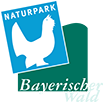A cabinet of rarities among the rocky ridges
Geology, lichens and mosses
The many and varied rock formations give the Großer Arber its distinctive face. The imposing outcrops are used by many visitors as viewing points. Few people realise that they are entering a habitat with endangered species. Stay on the paths to avoid treading on the delicate flora.
The Großer Arber is part of the oldest crystalline bedrock in Central Europe and is mainly made up of paragneiss rocks which were formed deep in the Earth’s interior around 640 million years ago. Arbergneiss owes its great resistance to weathering the mineral sillimanite.
Life on the rocky ridges is tough for the plants. A lack of water, wide temperature fluctuations and nutrient deficiencies means the plants undergo a rigorous selection process. Only “specialists” survive. With not a single particle of soil to store water, the only survivors on bare rock are lichens and mosses. To date, 134 species of lichen have been observed in the Arber region, while 307 moss species have been found, 36% of them being on the IUCN Red List. Many of these species occur only in an extra-alpine environment here on the Großer Arber and are therefore protected.
For specialists only!
Rare grasses, ferns and clubmosses thrive where humus accumulates in rock crevices. Learn about them by turning the wheel.
From rock to rock!
From the summit plateau, almost all the rocky ridges can be traversed via hiking trails. Try hopping from stone to stone on the path without touching the ground between. Can you make it to the top?
